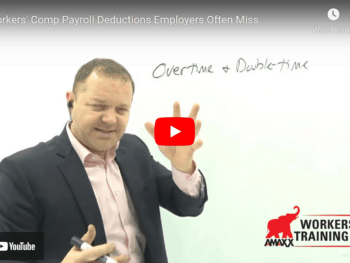WorkSafeBC recently announced that the average base premium rate for registered employers in British Columbia remains unchanged from 2011.
According to a report from the WBC, the 2012 average published base rate will be $1.54 per $100 of employers assessable payroll. WorkSafeBCs average published base rate for 2008 through 2010 was $1.56. The rates continue to be among the lowest in Canada and the lowest rates in B.C. for the last 30 years. (WCxKit)
The average published base rate is a composite of rates in 67 individual rate groups, or insurance pools, which are compilations of various classification units. Insurance premium rates for B.C.’s 206,000 employers are based on the claims cost (or safety) history of their industry and of similar employers, and are further adjusted based on individual performance.
For 2012, 53 percent of employers will experience a base rate decrease and eight percent of employers will have their base rate remain unchanged, while 39 percent of employers will experience a base rate increase.
WorkSafeBC projects a deficit at the end of 2011 and modest increases to the average base rate starting in 2013.
Premium rates charged to employers must be sufficient to cover the current and future needs of B.C.’s injured workers, some of whom will require financial and medical aid for the rest of their lives. To support financial requirements and maintain low and stable rates, WorkSafeBC invests a portion of the funds collected from employers.
Rate decreases are projected for the following industries: municipalities, public schools, fishing, ranching, log hauling, real estate, steep- and low-slope roofing, retail art galleries, movie theatres, bingo halls, telephone and cable services, ferry services, heavy equipment manufacturing, general retail, private schools, greenhouses, wineries, couriers, auto servicing, dentists, optometrists, most health care services, orchards and berry farming, coffee shops, wood mills, libraries, garbage removal services, recycling depots, public art galleries, and construction management consulting.
Most accommodation services, finishing carpentry, supermarkets, butcher shops, colleges, law and notary public offices, travel agencies, insurance, accounting, business and computer consulting services, restaurants, taxis, and general trucking will see their rates remain virtually unchanged or will incur modest rate changes. (WCxKit)
Industries whose rates are projected to increase include: movie and television production and post-production; television or radio broadcasting; ski hills; retail bakeries; animal boarding; airports; flooring stores; farm labour supply services; dump truck operations; campgrounds; liquor stores; residential framing; most waterfront operations; sawmills; construction labour supply; log-home construction; helicopter services; log towing; house construction; unions; residential tree services; casinos; manual tree falling; and grain, hay, white-mushroom, and vegetable farming.
Author Robert Elliott, executive vice president, Amaxx Risk Solutions, Inc. has worked successfully for 20 years with many industries to reduce Workers Compensation costs, including airlines, healthcare, printing/publishing, pharmaceuticals, retail, hospitality and manufacturing. See www.LowerWC.com for more information. Contact: Info@ReduceYourWorkersComp.com.
MODIFIED DUTY CALCULATOR: www.LowerWC.com/transitional-duty-cost-calculator.php
SUBSCRIBE: Workers Comp Resource Center Newsletter
Do not use this information without independent verification. All state laws vary. You should consult with your insurance broker or agent about workers comp issues.
©2011 Amaxx Risk Solutions, Inc. All rights reserved under International Copyright Law. If you would like permission to reprint this material, contact















